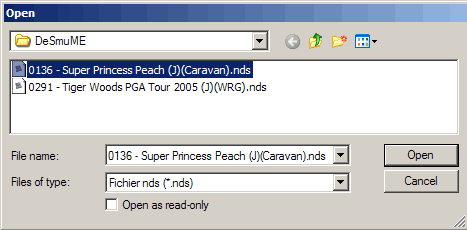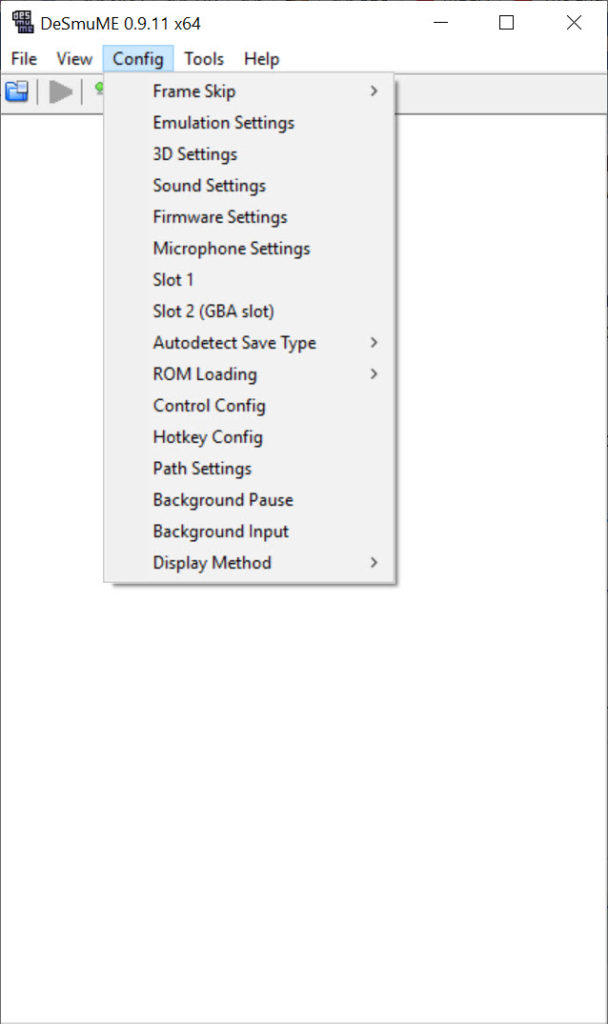

Separate savefiles: when enabled, loading/saving states will redirect regular saves to a separate file, as to keep your original save file intact.


Bind socket to any address: enables local multiplayer over LAN.WAV file: feeds a small WAV file as microphone input.White noise: feeds random noise as microphone input, which is enough for a lot of games.Microphone: uses input from the microphone connected to your PC, if any.Volume: sets the general volume for the emulated audio output.Note that changing this setting only changes the internal resolution for 3D graphics and does not affect the window size. Higher resolutions yield smoother graphics but may require more GPU power and may cause visual issues in certain games. Internal resolution: the resolution at which the renderer will render graphics.(in 0.7.3 and older this setting is found in the emulation settings dialog) Threaded: runs the rasterizer on a separate thread for better performance on multicore CPUs.This is forcefully enabled when using the OpenGL renderer as they work faster together. OpenGL display: uses OpenGL instead of Qt to draw the DS screens to the window.The OpenGL renderer is also capable of rendering at higher internal resolutions, allowing for better quality of 3D graphics. The OpenGL renderer will use your GPU, making it potentially faster but also less accurate.
#Desmume controls software#
The software renderer is the most accurate, but also the most intensive on your CPU.

Key mappings can also be cleared by pressing Backspace, just like for joystick mappings. Joystick mappings can also be cleared by pressing Backspace.Īs of 0.8.1, it is possible to map keys with modifiers (Ctrl+Z, Shift+Q, Ctrl+Alt+K.). You can press Escape to cancel the mapping process, leaving the previous mapping unchanged. To map a button, click it, then press the desired key or joystick button. This is where you map keyboard and joystick input. Note that if your firmware comes from a DSi or 3DS, you should keep this enabled. Boot game directly: when loading a ROM, this will run the ROM directly instead of running the 'Nintendo DS' boot screen.Once that is done, you can launch melonDS and set it up. To obtain the DSi required files, you can use this dumper. To get the DSi BIOS, firmware and NAND image, you need these files: DSi EmulationĪs of melonDS 0.9, melonDS can also emulate the DSi. You can dump these files from a DS/DSi/3DS with this dumper by running it on a flashcart.ĭSi/3DS DS-mode firmwares are not bootable. You can then configure the BIOS and Firmware by going to Emu Settings -> DS-mode and then navigate to the paths of each file. So, you will need to obtain those: DS Emulation We haven't gotten around to making alternate BIOS/firmware yet. If you still need something, don't hesitate to ask on our forums! LinkGetting started with melonDSįirst of all, melonDS requires BIOS and firmware dumps from a DS or if you want to emulate the DSi, melonDS requires the BIOS, firmware and NAND image. This page contains all the information you may need to get melonDS going.


 0 kommentar(er)
0 kommentar(er)
